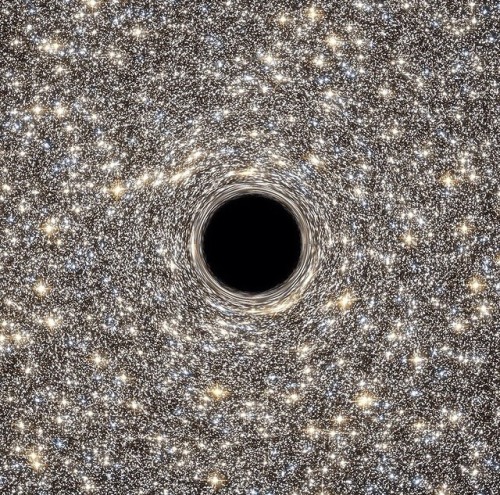Stay With Me...

Stay With Me...
More Posts from Delightfulskywalker and Others

M60-UCD1 black hole, via NASA

Luke in the Millennium Falcon A New Hope (1977) // The Last Jedi (2017)
My prof asked the class “who was emperor when jesus was born?” And a kid responded “Palpatine”
Never let anxiety fool you into thinking you’re not strong enough for something. Never let your anxiety fool you into thinking that you can’t achieve your biggest dreams. Never let anxiety convince you that you’re not loved or that there’s something wrong with you. Never let anxiety fool you into thinking that this is how you will be for the rest of your life. Never let anxiety control you.
(via thinkhapppy)






What are Pulsars?
Pulsars are spherical, compact objects that are about the size of a large city but contain more mass than the sun. Discovered in 1967, pulsars are fascinating members of the cosmic community.
From Earth, pulsars often look like flickering stars. On and off, on and off, they seem to blink with a regular rhythm. But the light from pulsars does not actually flicker or pulse, and these objects are not actually stars.
Pulsars radiate two steady, narrow beams of light in opposite directions. Although the light from the beam is steady, pulsars appear to flicker because they also spin. It’s the same reason a lighthouse appears to blink when seen by a sailor on the ocean: As the pulsar rotates, the beam of light may sweep across the Earth, then swing out of view, then swing back around again. To an astronomer on the ground, the light goes in and out of view, giving the impression that the pulsar is blinking on and off. The reason a pulsar’s light beam spins around like a lighthouse beam is that the pulsar’s beam of light is typically not aligned with the pulsar’s axis of rotation.
Click here to see the animation
Click here to hear the pulsars sound

Han Solo
Sometimes I don't feel anything..








The Most Influential Popular Science Books
Here is a list of legendary books on scientific discoveries and ideas that changed the world: true classics that are recommended for everyone.
Dialogue Concerning the Two Chief World Systems by Galileo Galilei (1632): “The most proximate cause of Galilei being brought to trial before the Inquisition. Using the dialogue form, a genre common in classical philosophical works, Galileo masterfully demonstrates the truth of the Copernican system over the Ptolemaic one, proving, for the first time, that the earth revolves around the sun. Its influence is incalculable. The Dialogue is not only one of the most important scientific treatises ever written, but a work of supreme clarity, remaining as readable now as when it was first published.”
The Origin of Species by Charles Darwin: ”The publication of this book in 1859 marked a dramatic turning point in scientific thought. Selling out its first edition on its first day, The Origin of Species revolutionized science, philosophy, and theology. Darwin’s reasoned, documented arguments advance his theory of natural selection and his assertion that species started with a few simple forms that mutated and adapted over time.“
A Brief History of Time by Stephen Hawking (1988): “How did the universe begin—and what made its start possible? Does time always flow forward? Is the universe unending? What will happen when it all ends? Told in language we all can understand, A Brief History of Time plunges into the realms of black holes, quarks, antimatter, the big bang and a bigger God. Stephen Hawking brings us closer to the ultimate secrets at the very heart of creation.”
Cosmos by Carl Sagan (1980): “Cosmos is one of the bestselling science books of all time. Cosmos retraces the fourteen billion years of cosmic evolution that have transformed matter into consciousness, exploring such topics as the origin of life, the human brain, Egyptian hieroglyphics, spacecraft missions, the death of the Sun, and the list goes on.”
Silent Spring by Rachel Carson (1962): “The marine biologist’s documented indictment of DDT led both to a U.S. ban on the insecticide and to the birth of the modern environmental movement. Carson argues that DDT not only indiscriminately kills insects, but also accumulates in the fat of birds and mammals high on the food chain, thinning eggshells and causing reproductive problems.”
Relativity: The Special and General Theory by Albert Einstein (1916): “In the early 20th century, scientists began to interrogate the Newtonian model of Physics that posits absolute time, intrigued by the possibility of a dimension in which space and time overlap. This text is Einstein’s philosophical explanation of the idea that changed the way we understand the physics of space and time.“
PS find me on Instagram, Facebook & Tumblr
-
 triciaisonline reblogged this · 8 years ago
triciaisonline reblogged this · 8 years ago -
 firetink99 liked this · 8 years ago
firetink99 liked this · 8 years ago -
 fashion-and-sanrio liked this · 8 years ago
fashion-and-sanrio liked this · 8 years ago -
 braughtny liked this · 8 years ago
braughtny liked this · 8 years ago -
 malmal2121 liked this · 8 years ago
malmal2121 liked this · 8 years ago -
 plantsnpeace reblogged this · 8 years ago
plantsnpeace reblogged this · 8 years ago -
 teenage-harmony reblogged this · 8 years ago
teenage-harmony reblogged this · 8 years ago -
 zukos-honor-vs-melonlord liked this · 8 years ago
zukos-honor-vs-melonlord liked this · 8 years ago -
 elovvai reblogged this · 8 years ago
elovvai reblogged this · 8 years ago -
 frozen-force-leia reblogged this · 8 years ago
frozen-force-leia reblogged this · 8 years ago -
 avada-matata reblogged this · 8 years ago
avada-matata reblogged this · 8 years ago -
 avada-matata liked this · 8 years ago
avada-matata liked this · 8 years ago -
 jedipath liked this · 8 years ago
jedipath liked this · 8 years ago -
 vaderisanakin reblogged this · 8 years ago
vaderisanakin reblogged this · 8 years ago -
 vaderisanakin liked this · 8 years ago
vaderisanakin liked this · 8 years ago -
 hadeswearsprada liked this · 8 years ago
hadeswearsprada liked this · 8 years ago -
 brightstarinthesky liked this · 8 years ago
brightstarinthesky liked this · 8 years ago -
 han-whos-scruffy-looking reblogged this · 8 years ago
han-whos-scruffy-looking reblogged this · 8 years ago -
 addisonand5sos liked this · 8 years ago
addisonand5sos liked this · 8 years ago -
 triciacreamer-blog reblogged this · 8 years ago
triciacreamer-blog reblogged this · 8 years ago -
 ladystar10point23 liked this · 8 years ago
ladystar10point23 liked this · 8 years ago -
 toinfinitymylove-blog reblogged this · 8 years ago
toinfinitymylove-blog reblogged this · 8 years ago -
 thezabrakassassin reblogged this · 8 years ago
thezabrakassassin reblogged this · 8 years ago -
 drewskywalkr reblogged this · 8 years ago
drewskywalkr reblogged this · 8 years ago -
 skywalkers-girl-216 reblogged this · 8 years ago
skywalkers-girl-216 reblogged this · 8 years ago -
 kodrevas liked this · 8 years ago
kodrevas liked this · 8 years ago -
 shy-aggression reblogged this · 8 years ago
shy-aggression reblogged this · 8 years ago -
 shy-aggression liked this · 8 years ago
shy-aggression liked this · 8 years ago -
 grandmoffimperial reblogged this · 8 years ago
grandmoffimperial reblogged this · 8 years ago -
 azure-witch13 liked this · 8 years ago
azure-witch13 liked this · 8 years ago -
 0glass-mentality-kid0 liked this · 8 years ago
0glass-mentality-kid0 liked this · 8 years ago -
 jdollafromtheg liked this · 8 years ago
jdollafromtheg liked this · 8 years ago -
 kitty-von-bonda liked this · 8 years ago
kitty-von-bonda liked this · 8 years ago -
 drivingyelenabelova reblogged this · 8 years ago
drivingyelenabelova reblogged this · 8 years ago -
 rxyalmess liked this · 8 years ago
rxyalmess liked this · 8 years ago -
 elextra reblogged this · 8 years ago
elextra reblogged this · 8 years ago -
 lonewizzy liked this · 8 years ago
lonewizzy liked this · 8 years ago -
 up4somet liked this · 8 years ago
up4somet liked this · 8 years ago -
 greentea5487 liked this · 8 years ago
greentea5487 liked this · 8 years ago -
 darlingamidala liked this · 8 years ago
darlingamidala liked this · 8 years ago -
 elizabeth-daae liked this · 8 years ago
elizabeth-daae liked this · 8 years ago -
 itwasyouu liked this · 8 years ago
itwasyouu liked this · 8 years ago -
 yourhanthe8th liked this · 8 years ago
yourhanthe8th liked this · 8 years ago -
 karnesisbear reblogged this · 8 years ago
karnesisbear reblogged this · 8 years ago -
 anakinhale liked this · 8 years ago
anakinhale liked this · 8 years ago -
 delightfulskywalker reblogged this · 8 years ago
delightfulskywalker reblogged this · 8 years ago
"Hope is like the sun. If you only believe it when you see it, you'll never make it through the night." -Princess Leia
286 posts